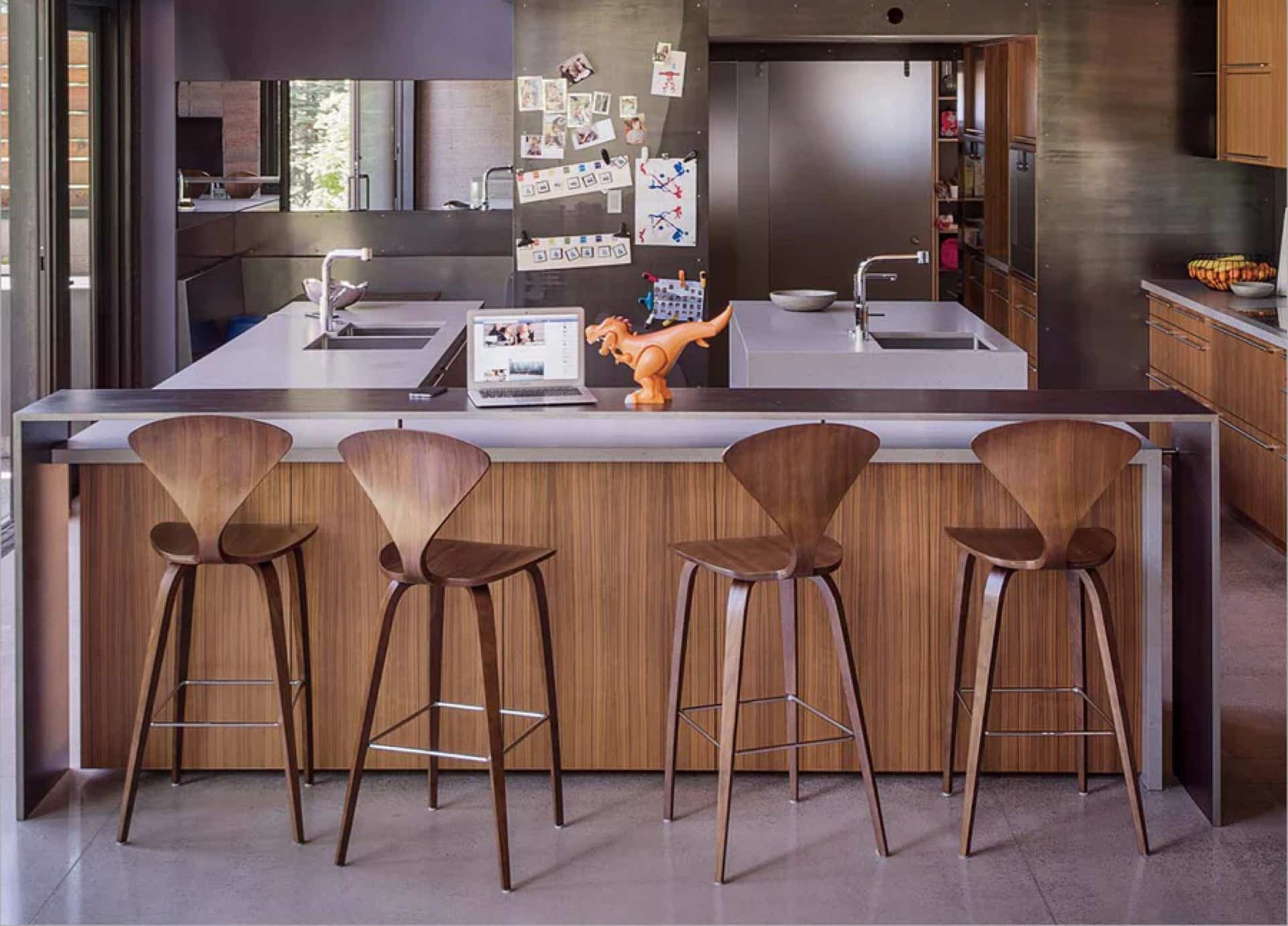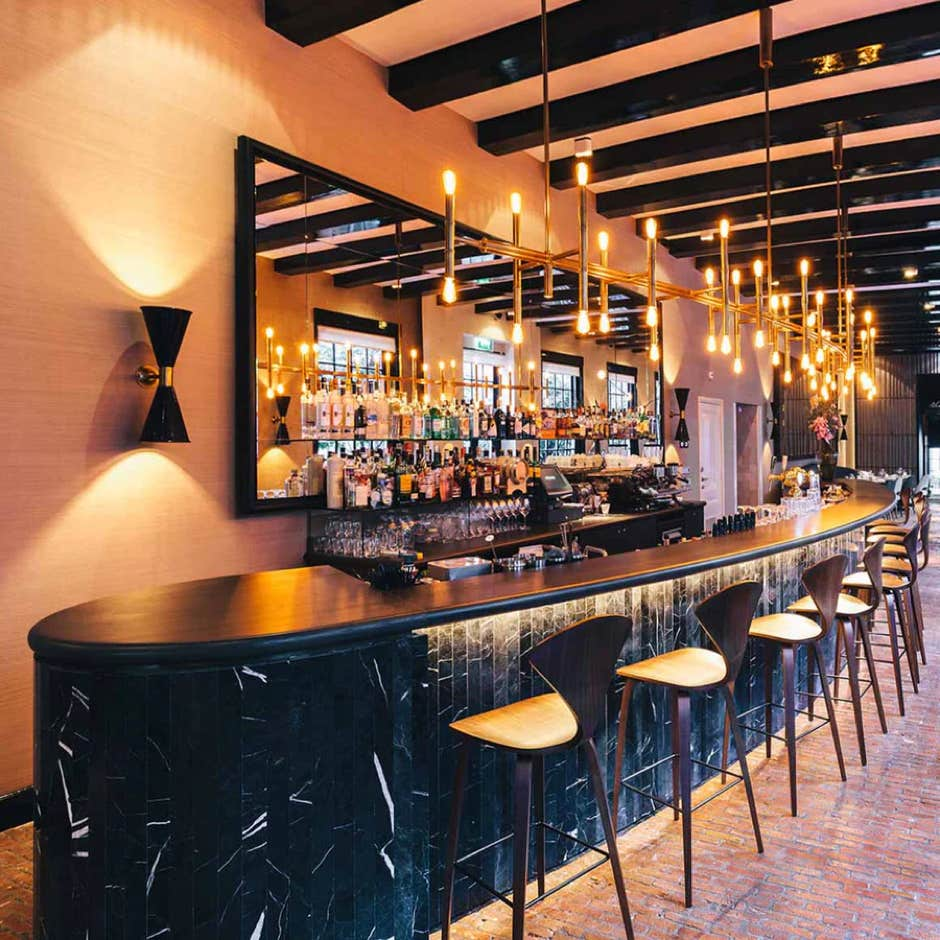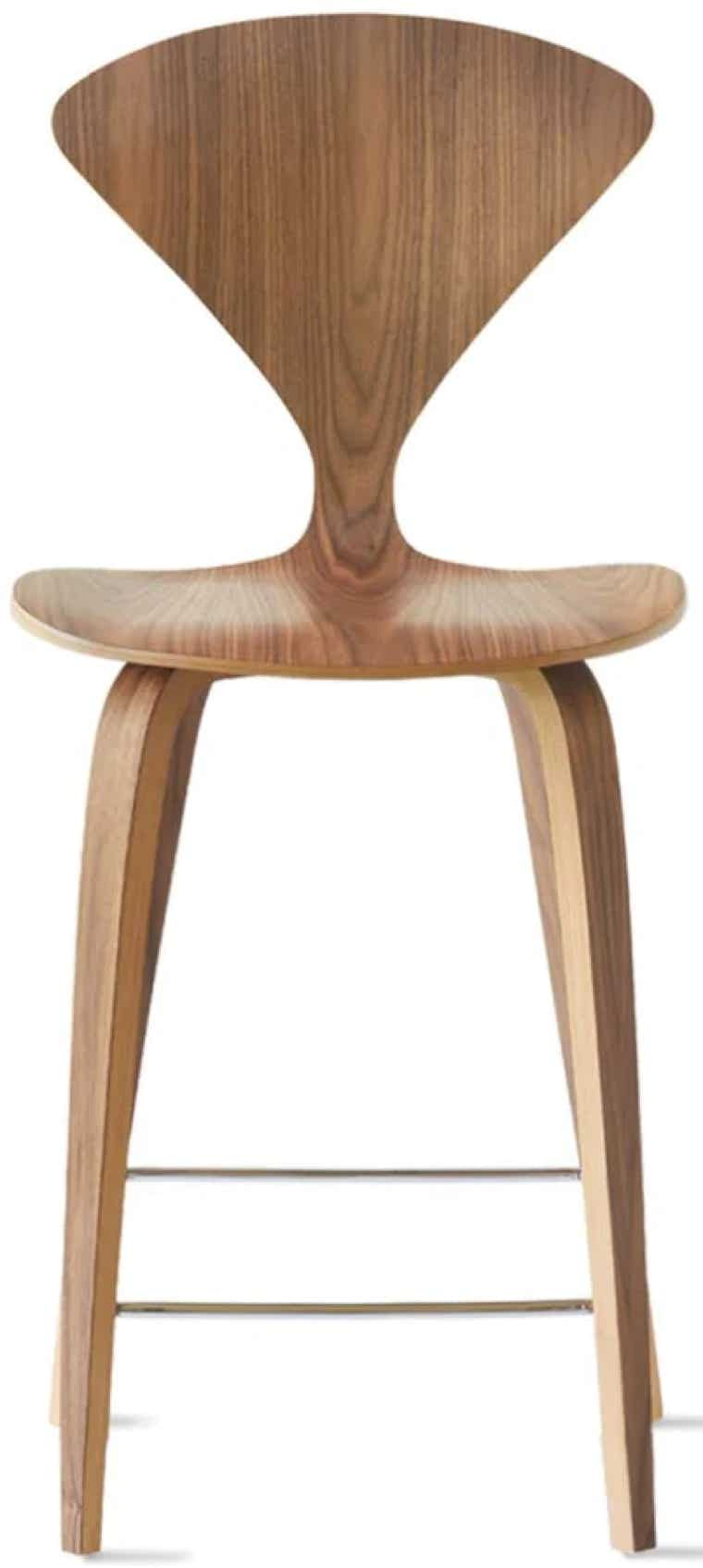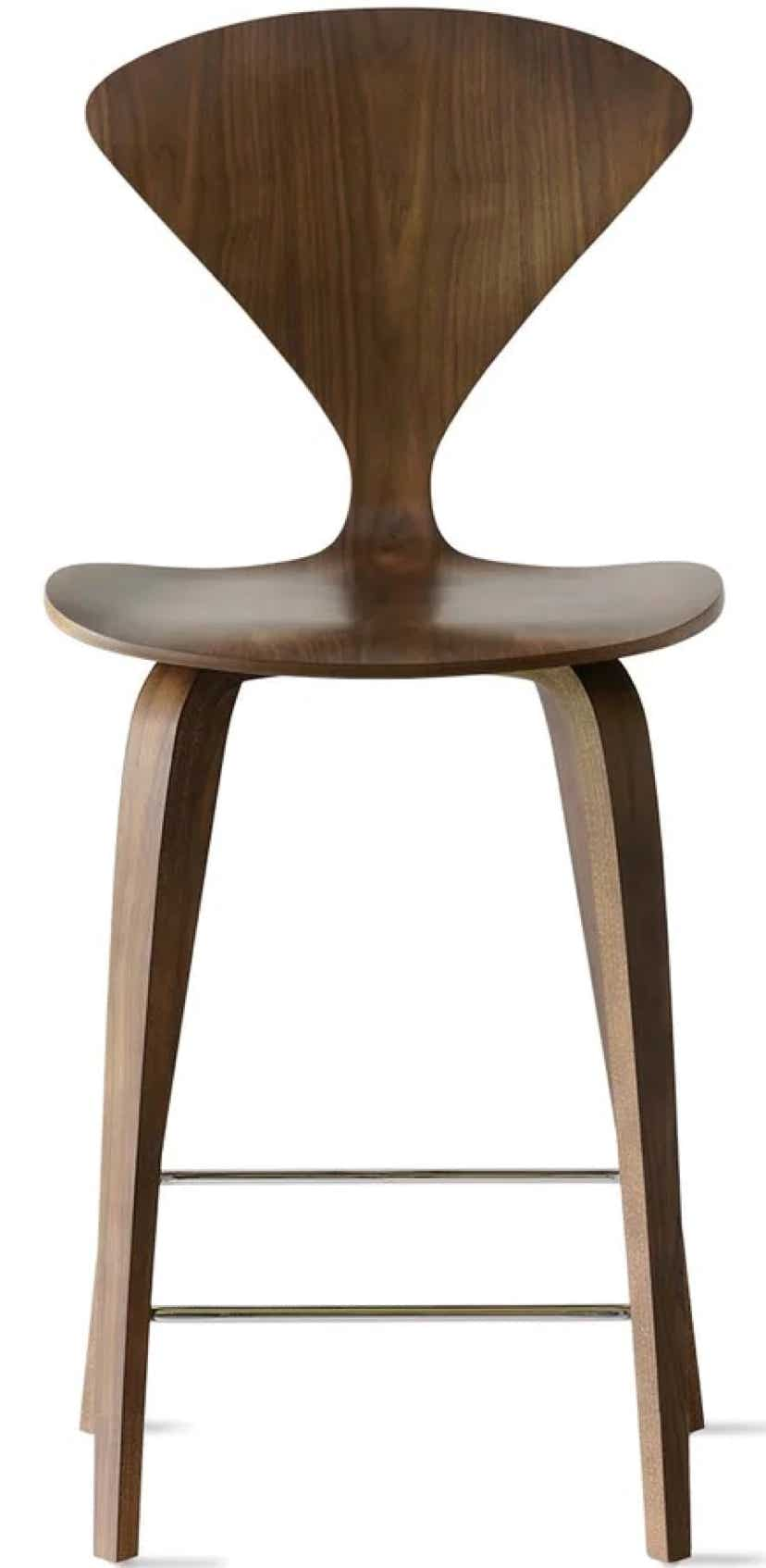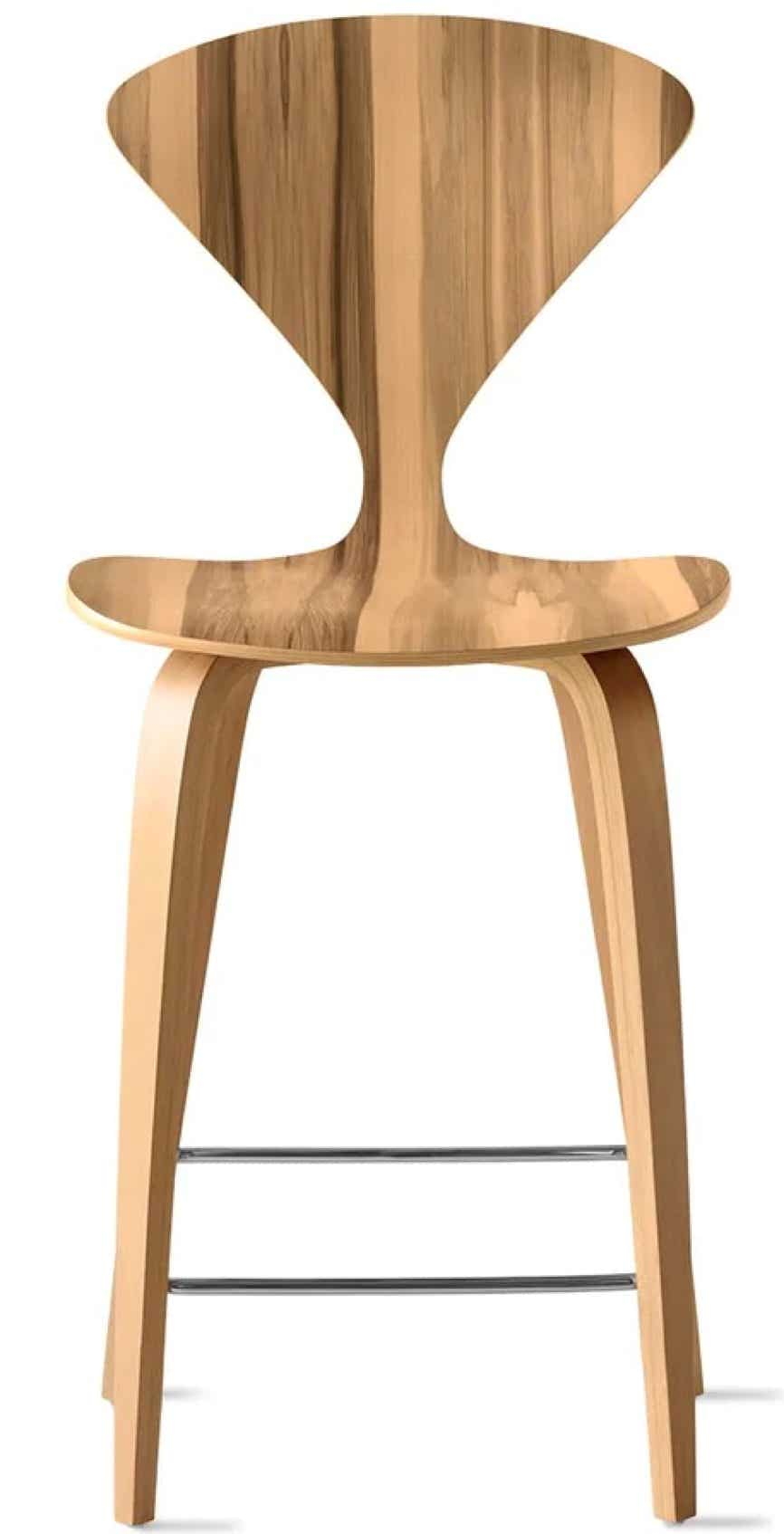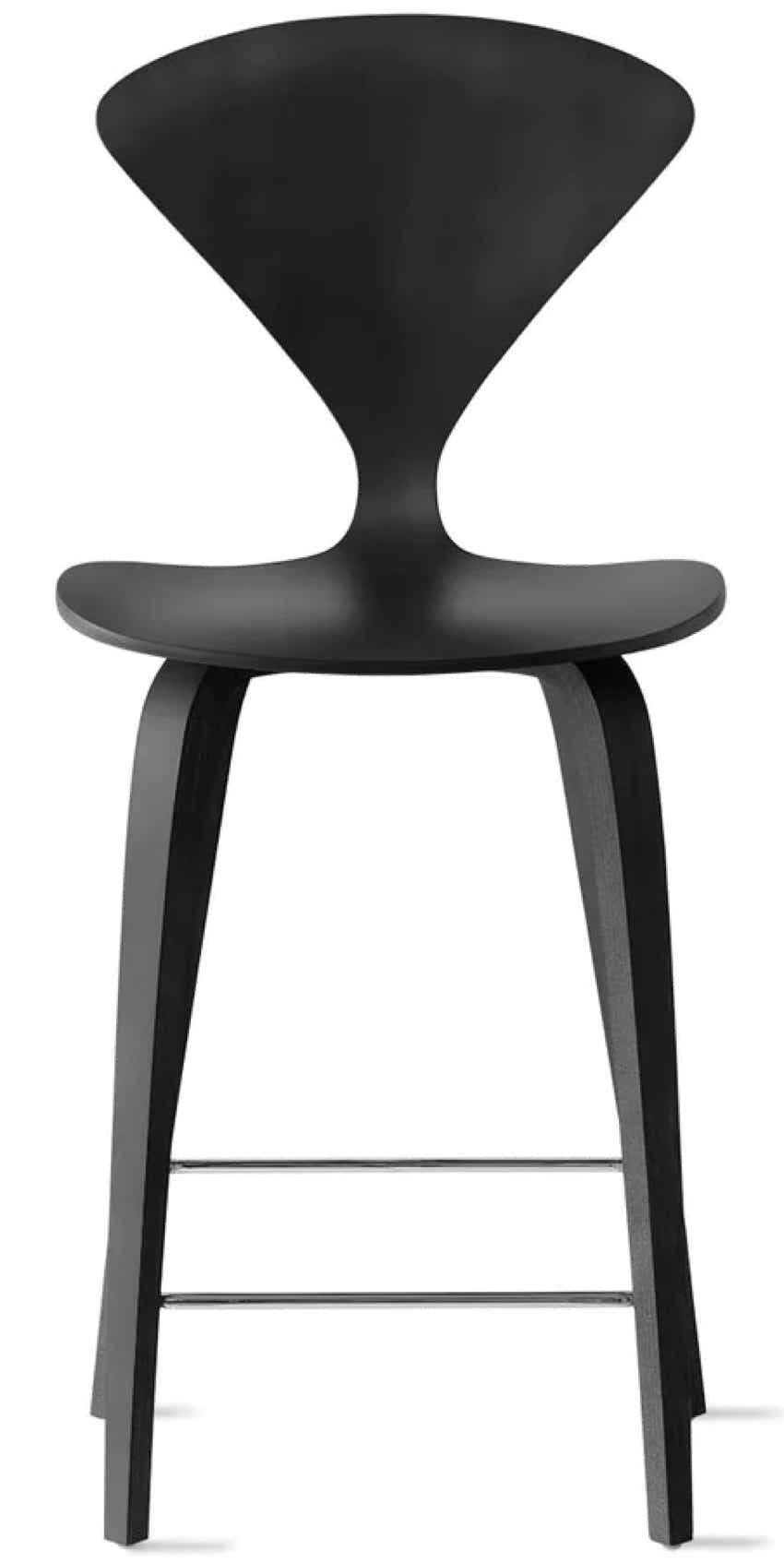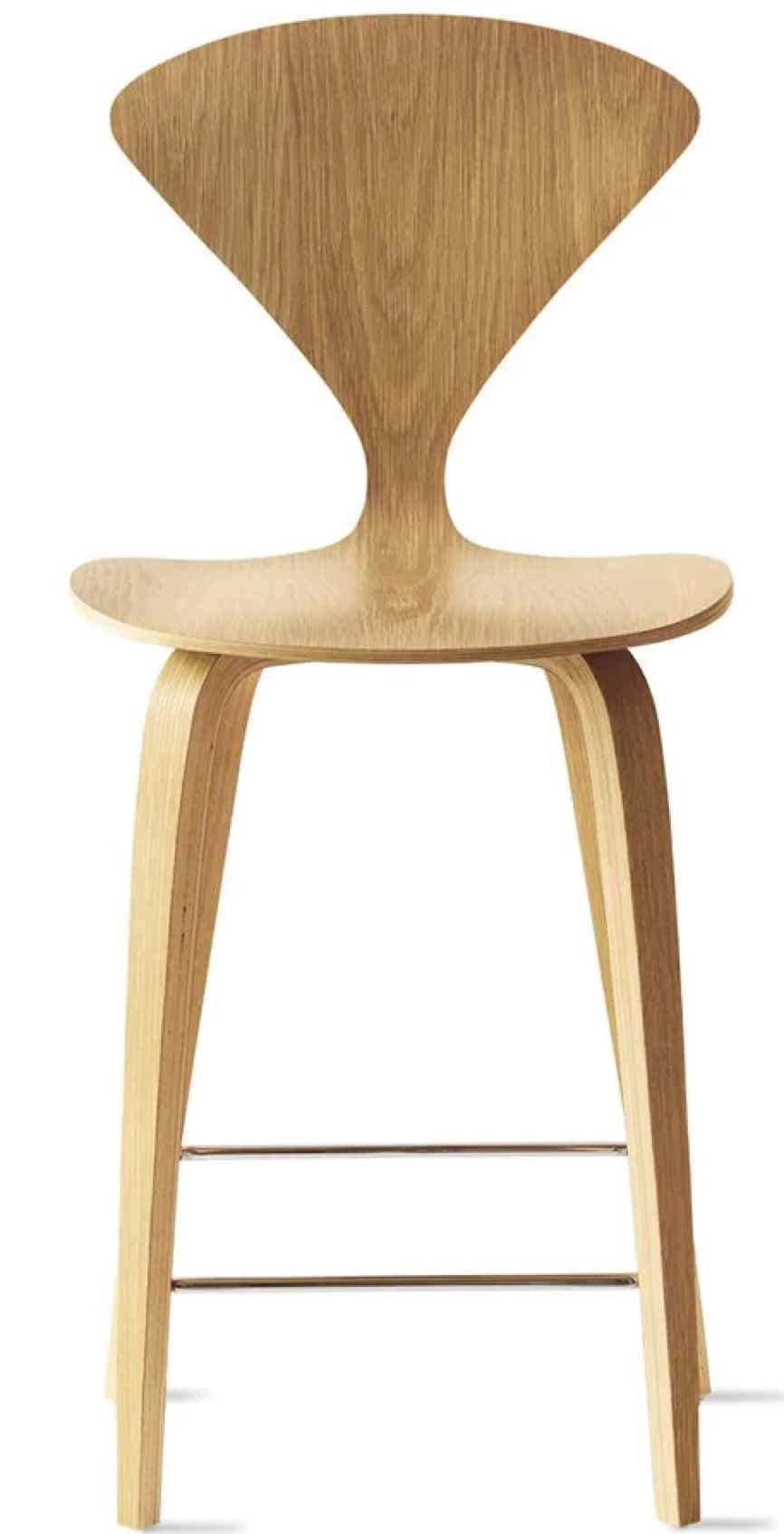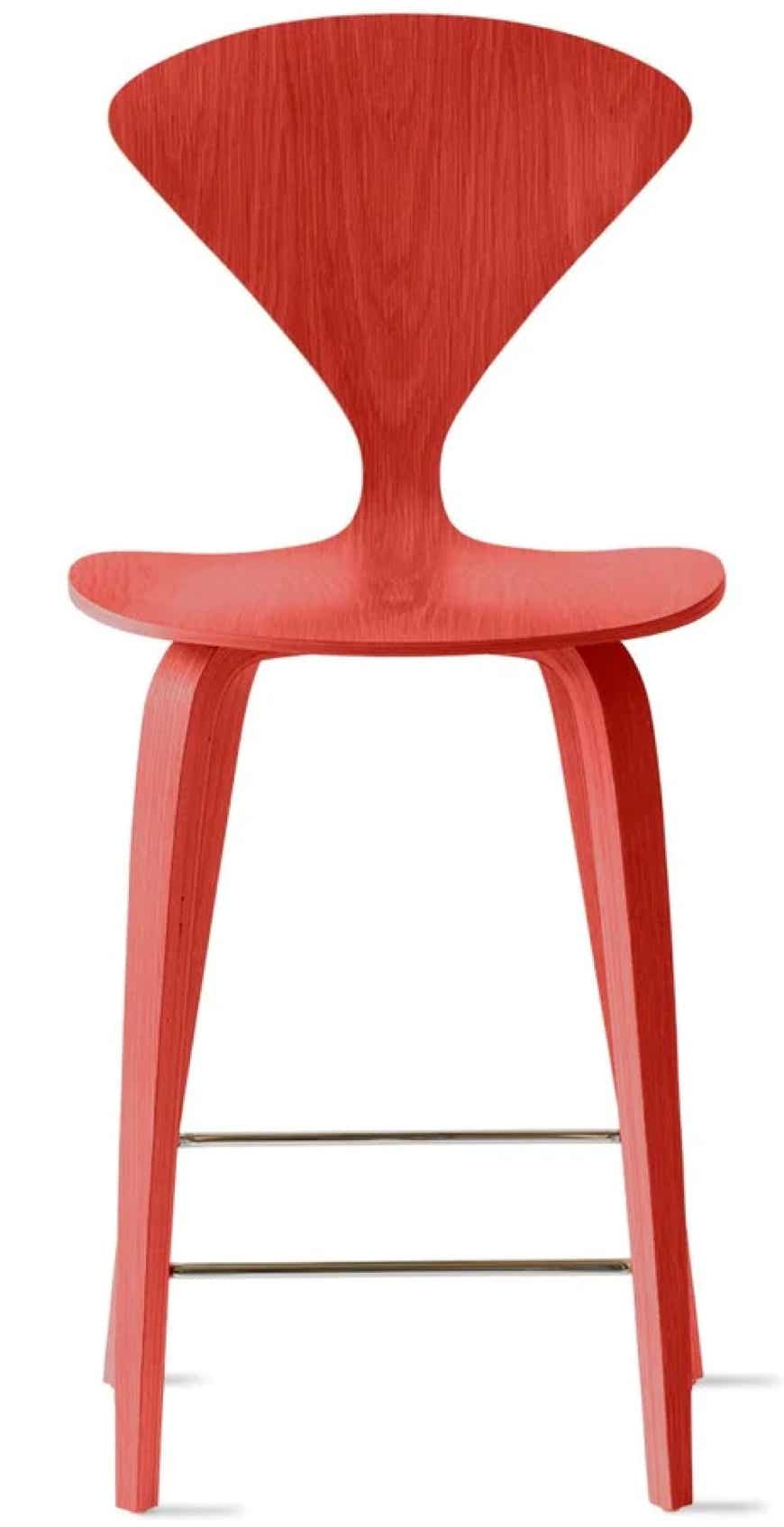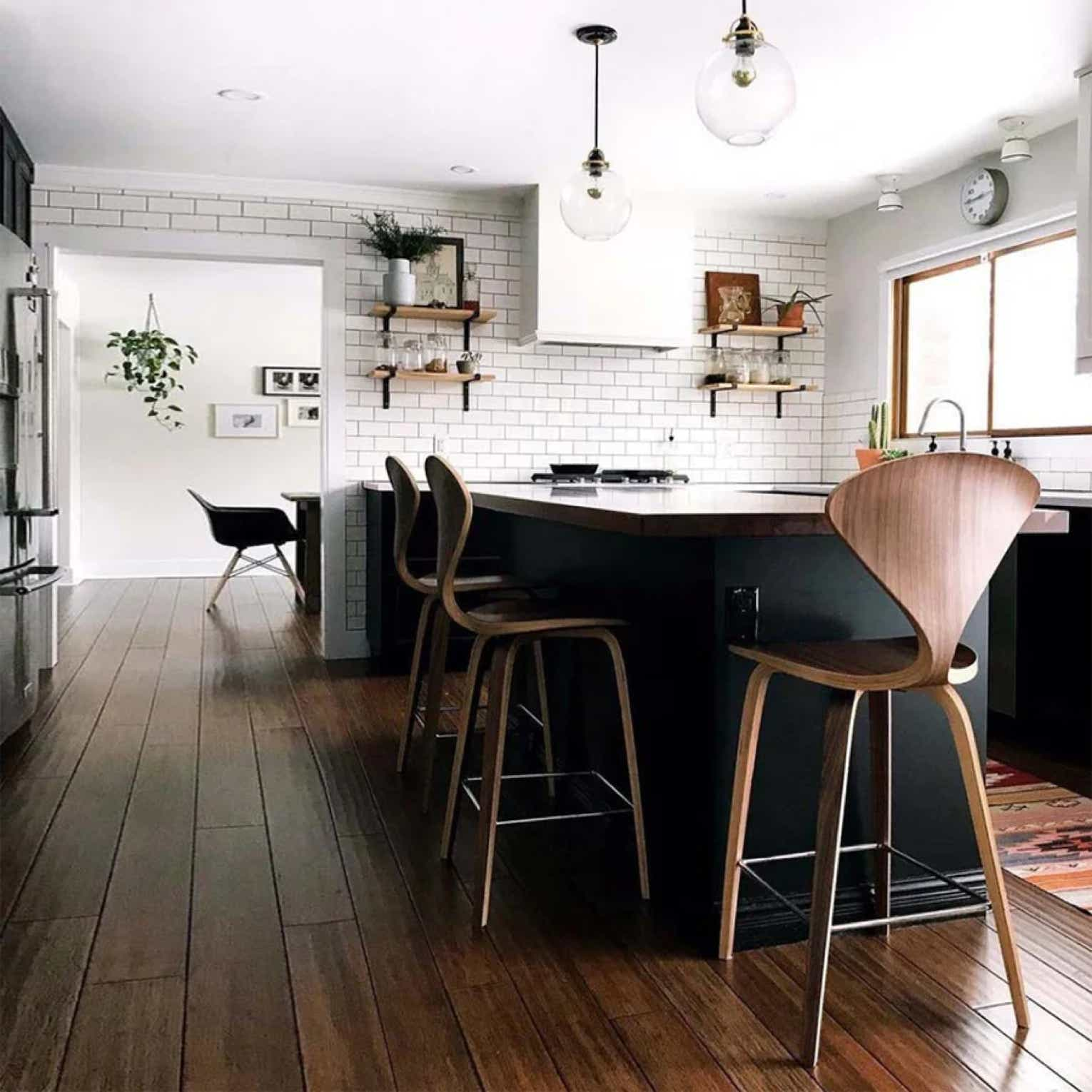
Cherner barstool is an elegant evolution of the iconic Cherner chair. Cherner barstool is available in two sizes and many finishes like » classic walnut", with dark edges, or "naturel walnut", with clear edges.
Made in USA.
High barstool W45,2 x D53,7 x H108 cm. Seat heigh 73,8 cm
Low bar stool W45,2 x D53,7 x H97,8 cm. Seat heigh 63,5 cm
Barstool – Natural Walnut
Barstool – Classic Walnut
Barstool – Natural Red Gum
Barstool – Classic Ebony
Barstool – White oak
Barstool – Orange
Norman Cherner

Norman Cherner was born in the United States in 1920. He spent his formative years at the Fine Arts Department of Columbia University in New York. There, he learned architecture according to the classical canons of the time, where noble materials had to be emphasised and highlighted by the architect. Above all, at the time, architecture as taught in universities was an art form in the same way as painting or sculpture, and not an industry. Norman Cherner went on to teach in the same department, and worked at the Museum of Modern Art in New York (MoMA) between 1947 and 1949. It was there that he discovered the Bauhaus movement. Originating in Germany, this movement envisaged architecture as a means of making people's lives easier and cheaper. Gone was the dictatorship of beauty for beauty's sake. To achieve this, the Bauhaus explored the possibilities offered by new materials and new techniques brought about by chemical and physical progress. Norman Cherner fully embraced this manifesto. His career took a new turn.
Influenced by the Bauhaus, Norman Cherner set himself the task of building a fully furnished prefabricated house at low cost. To achieve this, he used the least noble but most practical materials: plastic and above all plywood, of which he would become a specialist. In 1957, Norman Cherner built a prefabricated house for the US Department of Housing. The work was exhibited in Vienna, Austria. The house was then dismantled and sailed across the Atlantic to Connecticut, where it served as Norman Cherner's home and studio. The prefabricated houses were not commercially successful. However, the designer did achieve international recognition. He did not abandon his idea, however, and began writing a series of books explaining how to make your own furniture and house.



